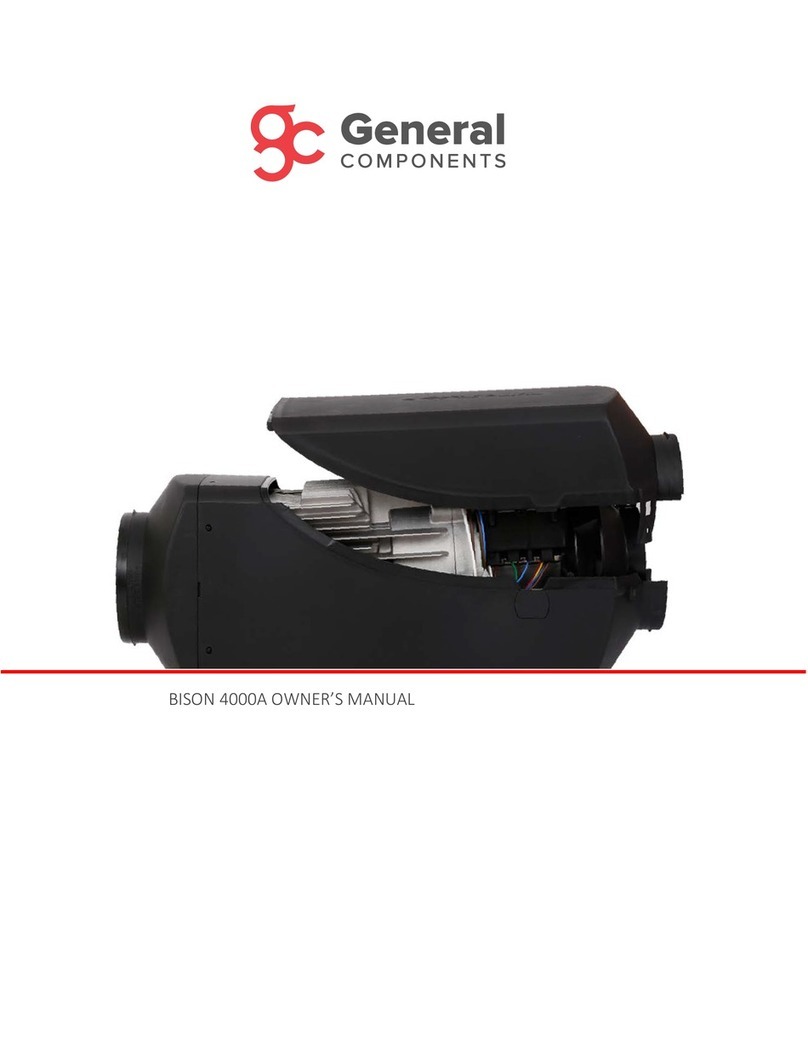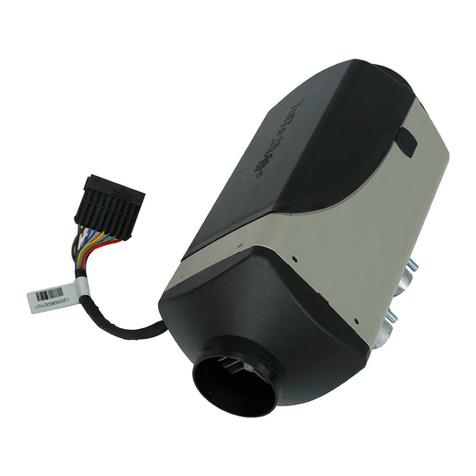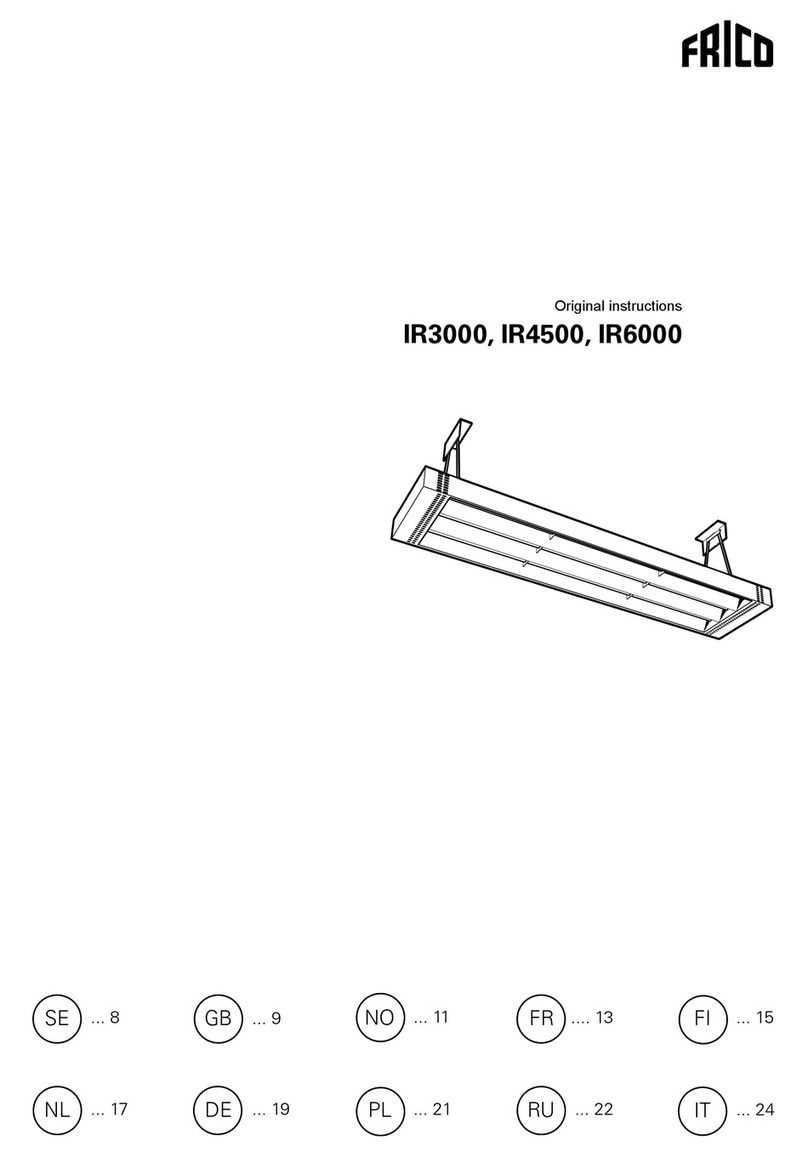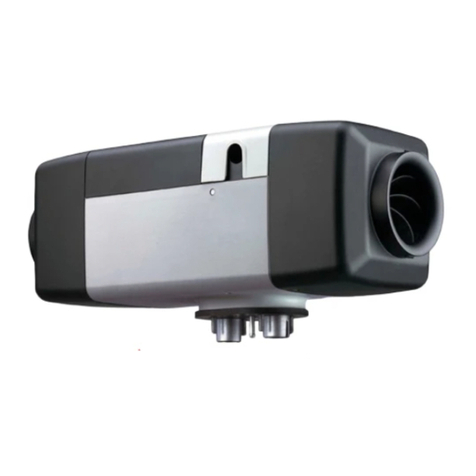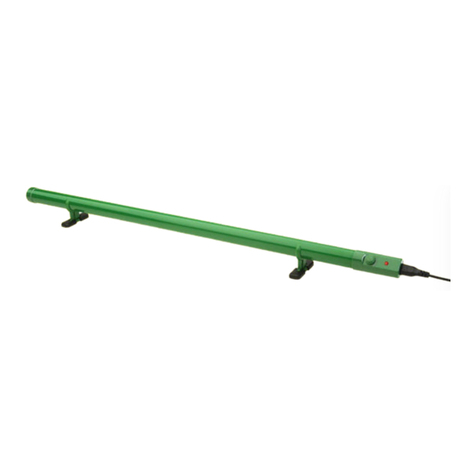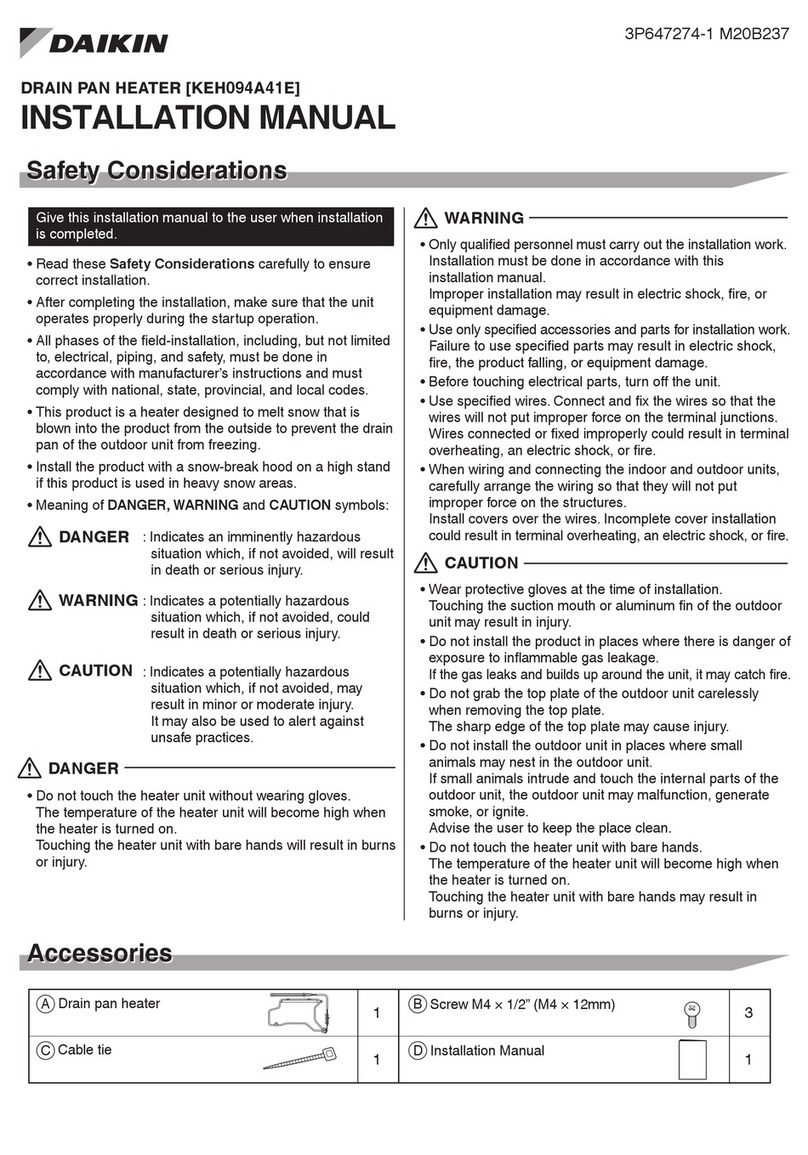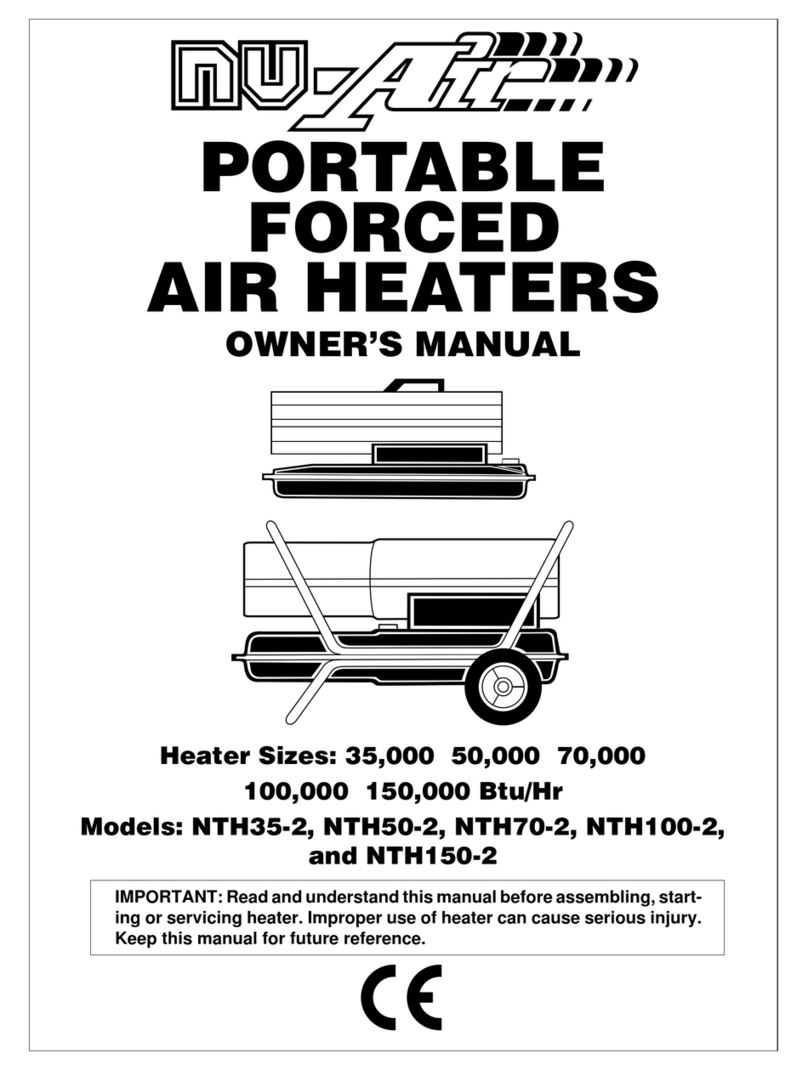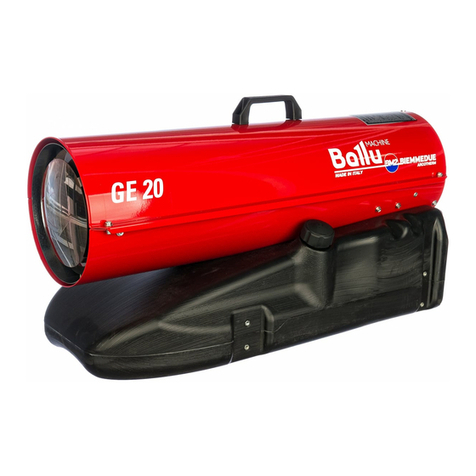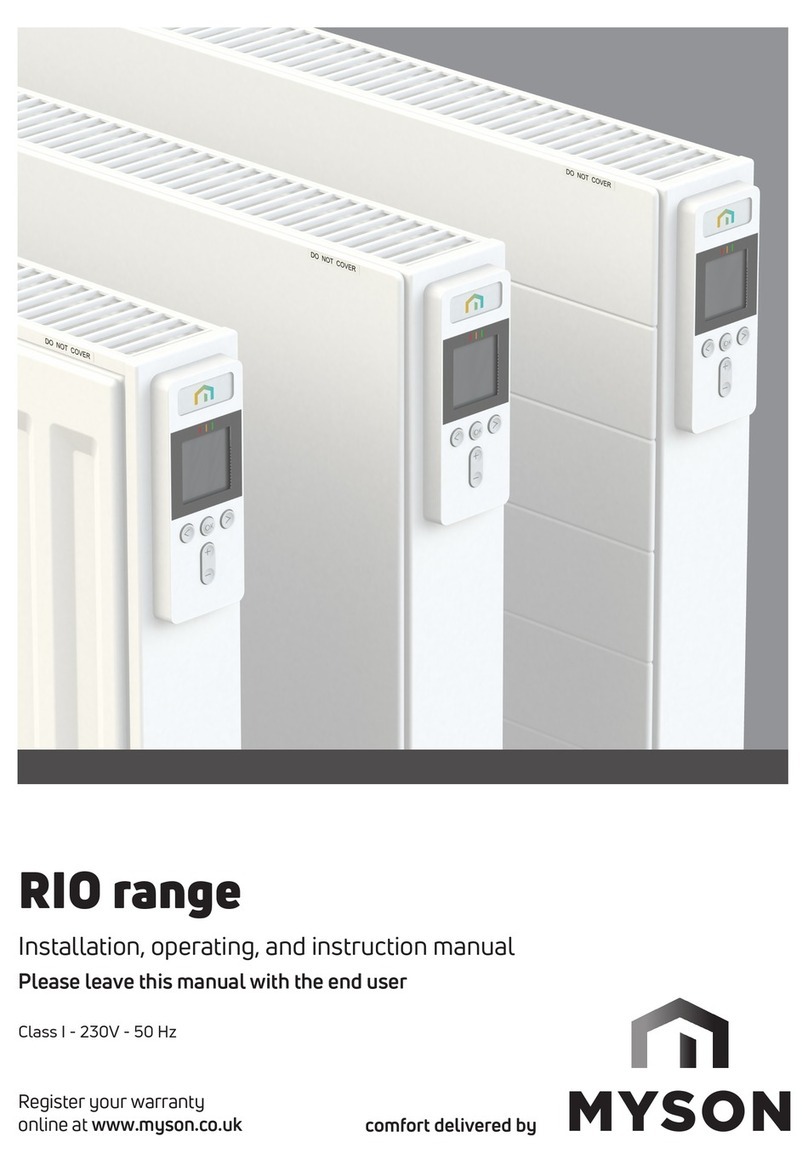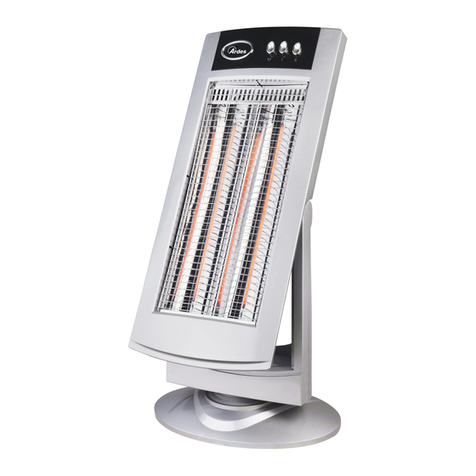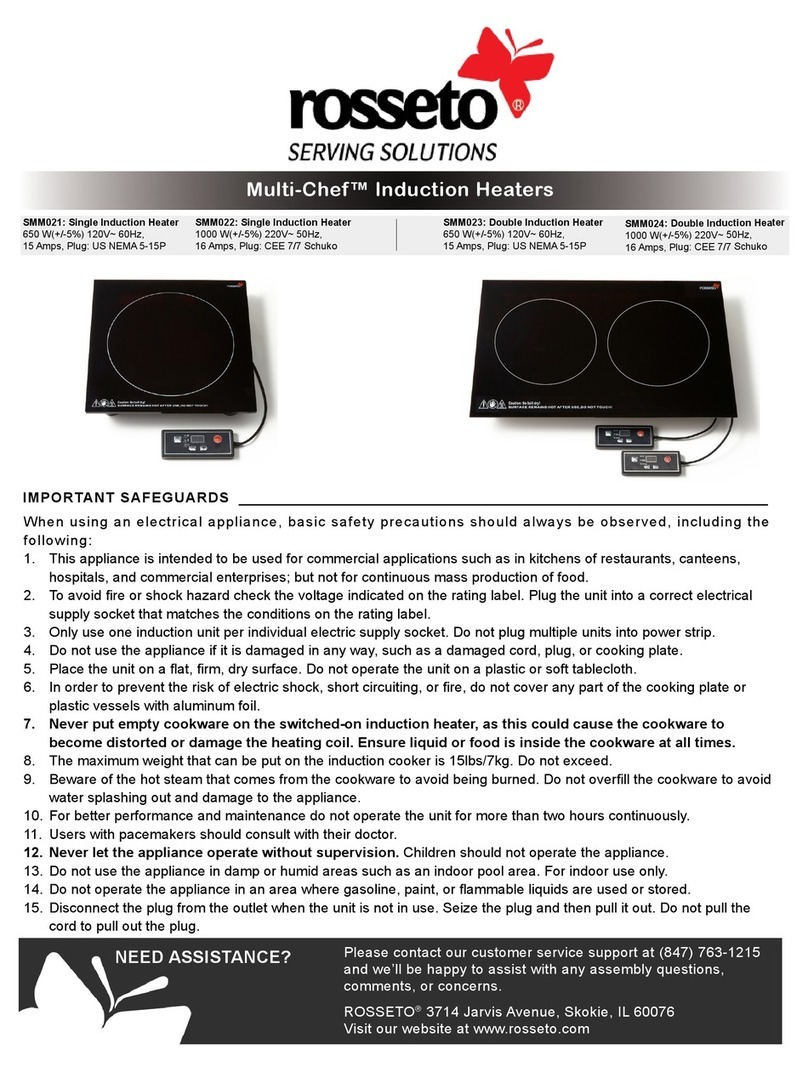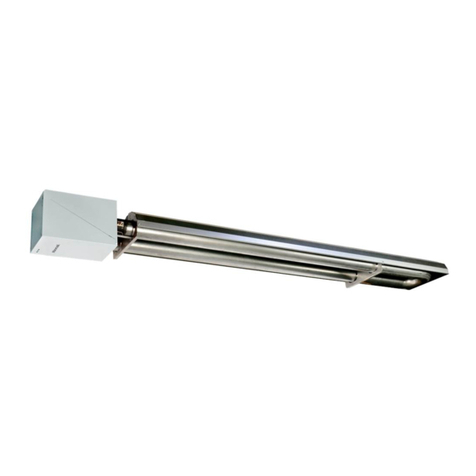General Components BISON 2000A User manual

BISON 2000A OWNER’S MANUAL

2
Preface
Thank you for purchasing the BISON 2000A Air heater. This instruction book
describes the structures, working principles, installation and operation of
the BISON 2000A. For correct use of the heater, please read this instruction
book carefully before installation and use. The instruction book should be
saved in a convenient place for reference later.
Note
•This instruction book is subject to revision without notice, but the
instruction book is in conformity to the purchased product.
•Our effort is to explain all questions you may have. If you have any
doubts or find anything incorrect in this manual, please contact us
directly.
•Check the heater for any damage when unpacking and contact the
dealer immediately if anything is found.
•If any troubles arise during application, please contact General
Components or other customer service stations authorized by this
company. We shall do our best to provide service to you.
Comply with the operation manual for installation and use, to ensure
prolonged and reliable operation.

3
Contents
Introduction .......................................................................................................5
Technical Data....................................................................................................6
BISON 2000A Internal Structure.................................................................7
Structures and Working Principles.............................................................8
Case Assembly............................................................................................9
Installation .......................................................................................................10
Installation of the Main Heater Body.......................................................12
Air Inlet & Outlet......................................................................................14
Additional Ducting (Optional) ..................................................................15
Installation of Combustion Air Pipe and Exhaust.....................................16
Fuel Lines......................................................................................................18
Fuel Standpipe .............................................................................................21
BISON 2000A Wiring Diagram –Brushless Version.....................................23
Timer and Rheostat Control Plugs ...........................................................25
Wiring Loom Plug for Timer and Rotary Control .....................................26
Circuit Interfaces......................................................................................27
Operation.........................................................................................................28
Rheostat Control ..........................................................................................28
Mini Timer....................................................................................................29
Manual Start Up and Shut Down .............................................................30
Pre-setting Heating Time .........................................................................30

4
Pre-setting Starting and Heating Times ...................................................30
Checking Temperature.............................................................................31
Converting to Thermostatic Mode...........................................................31
Fault Information .....................................................................................31
Remote Operation ...................................................................................32
Installation Fuel Priming Feature.............................................................32
LCD Digital 7-Day Timer ...............................................................................33
Changing Language ..................................................................................34
Changing the Date and Time....................................................................35
Manual On/Off.........................................................................................36
Switching to Thermostatic Mode.............................................................37
Fan Mode .................................................................................................37
Pre-setting Heating Times........................................................................38
Installation Fuel Priming Feature.............................................................40
Checking Error Codes...............................................................................41
Resetting Digital Controller to Factory Settings.......................................42
Maintenance ....................................................................................................43
Fault Codes.......................................................................................................44
Rheostat Control..........................................................................................44
Fault Codes..................................................................................................... 44
Timers...........................................................................................................45

5
Introduction
The main equipment of the BISON 2000A air heater (hereinafter referred
to as ‘the heater’) is a small fuel furnace controlled by a single-chip micro-
processor. Its furnace body (the heat exchanger) is located in the hood
shaped case, which serves as an independent air passage. Cold air is drawn
into the air passage by the fan and blown out when it becomes hot.
The heat can be supplied by the heater to the driver’s cab and passenger’s
compartment independently from the engine. The schematic diagram is
shown in Fig I.
The heater is fully automatically controlled. It features a compact structure,
easy installation, low running costs, easy maintenance and is safe and
reliable.
1. Control switch
2. Heater Body
3. Fuel Pump
4. Wiring Harness
5. Vehicle’s Battery
6. Vehicle’s Fuel Tank
7. Exhaust Pipe
8. Combustion Air
Intake
Figure I
1
25
6
3 4
8
7

6
Technical Data
Output (w)
2000
Fuel
Petrol
Diesel
Voltage
12/24V
12/24V
Fuel Consumption (l/h)
0.14 - 0.27
0.12 - 0.24
Power Consumption
14 - 29
Working Temperature
-40°C - 20°C
Weight (KG)
2.6
Dimensions (mm)
323x120x121
Variable Output
Current Draw
Position
(Amps)
PO1
0.9
PO2
1.1
PO3
1.2
PO4
1.3
PO5
1.5
PO6
1.7
PO7
1.9

7
BISON 2000A Internal Structure
Figure II
1. Heat exchanger 2. Gasket 1 (4 hole)
3. Combustion chamber 4. Burner Assembly
5. Gasket 2 (5 hole) 6. Air Motor Assembly
7. Insulating bush 8. ECU
9. Air Fan Wheel 10. Glow Pin
11. Overheat Sensor

8
The heat exchanger is made of die-cast aluminium, with radiating fins around
the rear. The combustion chamber fits inside the inner cavity of the heat
exchanger. The burner assembly and glow pin, fit into the end of the
combustion chamber. Fuel comes to the burner assembly through the fuel
pipe and is ignited by the glow pin. The flame is passed up the combustion
chamber and returns between the inner walls of the heat exchanger and
discharged through the exhaust outlet vent to the outside of the vehicle or
boat.
The air supporting combustion of the furnace, comes from the combustion air
inlet port and is sent down the combustion pipe by the combustion
supporting air blades of the fan motor.
Structures and Working Principles
The structure of the main heater is shown in Fig. III
1. Heat Exchanger 2. Heater Case
3. Insulating Bush
Figure III
321

9
Case Assembly
Figure IV
12.Junction box cover 13.Top Case
14.Hot air outlet 15.Inlet Cover
16.Outlet Cover 17.Grill

10
Installation
The kit includes everything necessary for installation.

11
Figure V
18. Control Switch/Timer 19.Main Wire Harness
20.Fuel Pump 21.Mounting Gasket
22.Combustion Air Inlet Pipe 23.Exhaust Pipe
24.Fuel Pump Extension Loom 25.Fuel Standpipe
26.Fuel Pipe 27.Fuel Pump Bracket
28.Fuel Filter 29.Exhaust Pipe Clip
30.Exhaust Pipe Fixing Clip 31.Air Inlet Fixing Strap
32.Fuel Connector Hose Clip 33.Fuel Line Connector
34.Air Inlet Hose Clip 35.Control Fixing Screw
36.Anti-Vibration Mount (M6)
Figure V shows the diagram for installation. The position and ways of fixing of
various parts may vary from one vehicle/boat to another, but the general
principles remain the same.
Attention:
•Do not mount the heater near any flammable sources
•Do not install the heater in closed spaces without ventilation
•Do not place the heater near anything that can cause a blockage
•Do not mount the heater near any water sources and protect it from
any splashing

12
Installation of the Main Heater Body
For the ease of servicing, fault finding and air flow it’s recommended that
the main body is placed in an area with easy access. Figure VI shows the
minimum distances required.
Figure VI
A. Air heating inlet B. Air heating outlet
C. Combustion air inlet D. Fuel inlet
E. Exhaust outlet F. Non-interference area
G. Information label H. Installation surface
I. Gasket
Choose a flat installation surface, any undulations could cause the case to
twist and will not ensure an even mount. Make sure there are no foreign
bodies between the bottom of the heater and the installation surface itself.
This will ensure a good seal between the two. File down any drill holes to
again ensure an even mounting surface. Tighten the M6 bolts provided to a
torque setting of 6Nm+1Nm.
Figure VII shows the position of the installation holes. If the installation area
is less than 1.5mm thick a mounting plate will be required (Figure VIII).
32320 50
155
120
A B
C ED FG
29
120
20
121

13
A. Mounting Gasket B. Mounting Plate
Figure VII Figure VIII
If the heater is being reinstalled, a new gasket should be used.
Figure IX
148
7.5
170
85
125
2
5
25 35.5
7.5
26
12 44
18
55
DIMENSIONS: MM
A
B
0 - 90°
0 - 90°

14
The direction of the heater for installation is shown in figure IX.
Ensure you do not exceed the inclination angle or normal operation will be
affected.
After installation, make sure there is no friction between the fan and other
nearby parts to ensure smooth operation and make sure the heater label
is clearly visible for ease of maintenance in the future.
Air Inlet & Outlet
Make sure that the hot air outlet does not exit onto any parts affected by
heat and that it isn’t directed toward the flow of anything that can cause a
blockage, near splashing water or near the vehicles exhaust.
Correct Wrong
Figure X
Avoid re-entering of the supplied hot air into the inlet port (as shown in
Figure X). If no inlet pipe is required, make sure the grill is installed at the inlet
port instead (Figure IV no. 17).

15
Additional Ducting (Optional)
Quantity of ducting can be purchased according to
needs.
A. Grill or ducting B. Heater Body C. 60mm Hose Clip
D. 60mm APK Ducting E. 80-60mm Reducer F. 80mm Directional Vent
Figure XI
A. Heater Outlet B. 60mm Hose Clip C. 60mm APK Ducting D. 60mm ‘Y’ Branch E. 80-
60mm Reducer F. 80mm Directional Vent G. 80mm Open/Close Vent
Figure XII
A
B C D E F
F
AB C D
E
G
F

16
Installation of Combustion Air Pipe and Exhaust
The combustion air inlet pipe sucks in fresh air from outside of the vehicle
and the exhaust discharges fumes outside of the vehicle. Measures must be
taken to avoid the fumes from re-entering the vehicle.
The pipes should exit at the bottom of the vehicle, ensuring that the
openings are far enough away from any splashing water or dirt that can clog
them. Figure XIII shows the right and wrong way to install the pipework.
A. Correct B. Wrong
Figure XIII
Only use the inlet pipe and exhaust provided with the kit for installation. The
exhaust pipe is made of corrugated stainless steel while the combustion pipe
is aluminium covered in paper and plastic. Do not confuse the two. Use the
supplied clamps to fix them securely to the combustion air inlet and the
exhaust outlet on the heater. The protective end cap on the outlet of the
A B

17
combustion air pipe and exhaust pipe should be kept in good
condition. Do not damage or remove them.
Both the combustion air pipe and exhaust pipe should come downward from
the heater and face opposite to the vehicle’s direction of travel. If the pipe
cannot avoid a curve, make sure the radius is no smaller than 50mm and the
sum of all curves does not exceed 270˚.Figure XIII shows the right and wrong
way to install the combustion air intake. Note that it is the same for the
exhaust too.
A & B –Correct C & D - Wrong
Figure XIV
When the heater is operating, the exhaust will
get hot, so make sure it is installed away from
any parts that could get damaged by high
temperatures. The exhaust vent should also
point downward to the road surface with an
angle of 90˚±10˚. This is best achieved by fixing
a clamp 150mm from the pipe end.
Any exposed exhaust should be covered with a
heat shield to prevent scalding.
Figure XV
Direction of Travel
Direction of Air Flow
ABC D
10°
10°

18
Fuel Lines
Figure XVI
1. Fuel Tank 2. Fuel Standpipe 3. Fuel line Hose Clamp
4. Fuel Line 5. Rubber Fuel connector 6. Fuel Filter
7. Fuel Pump 8. To Heater
Always fit the fuel pump on the anti-vibration mount securely onto the
vehicle. Ensure the outlet of the fuel pump tilts upward. The correct angle is
shown in Figure XVII.
Where possible the fuel line is ideally placed uphill to the fuel pump to ensure
ideal bleeding of the fuel line.
2
3 4
5
6
7
8
1
2000-6800mm
500-1200mm

19
A
B
C
1
2
3
90°
0°
15°
35°
E
F
D
4
1. Heater Body 2. Max. Fuel Level
3. Min. Fuel Level 4. Fuel Pump
Fuel Pump Angle & Suction Height
A.3000mm B.500mm
C. 2000m D. Not acceptable
E. Acceptable (between 15-90°) F. Not acceptable
Figure XVII
Figure XVII shows the ideal way to mount the fuel pump
The fuel pump’s outlet should tilt upward at an angle between 15˚-35˚ (as
shown above).

20
Only use the fuel line provided, ensure the pipe is placed away
from any possible debris and avoid any sagging in the line. Make sure the fuel
line does not flow downward toward the fuel pump. This will prevent correct
fuel flow and produce air bubbles in the line.
The fuel filter, fuel pipe and clamps should all be replaced after 2 years of
us
12
Correct Wrong
1. Flush –No Air Bubble 2. Gap –Air Bubble Formed
Figure XVIII
Figure XVIII shows the correct way to connect fuel lines to prevent the build-
up of air bubbles. Ensuring they are flush and minimising bends.
When the fuel is being sucked from the vehicle tank, or an independent tank,
a suction pipe is required. Make sure all the openings are appropriate for the
installation and a tight seal is maintained for the base of the suction pipe.
The bottom of the suction pipe should be about 30-40mm from the bottom of
the fuel tank so as to avoid sucking impurities or sediment from the bottom
of the fuel tank.
Table of contents
Other General Components Heater manuals
Popular Heater manuals by other brands
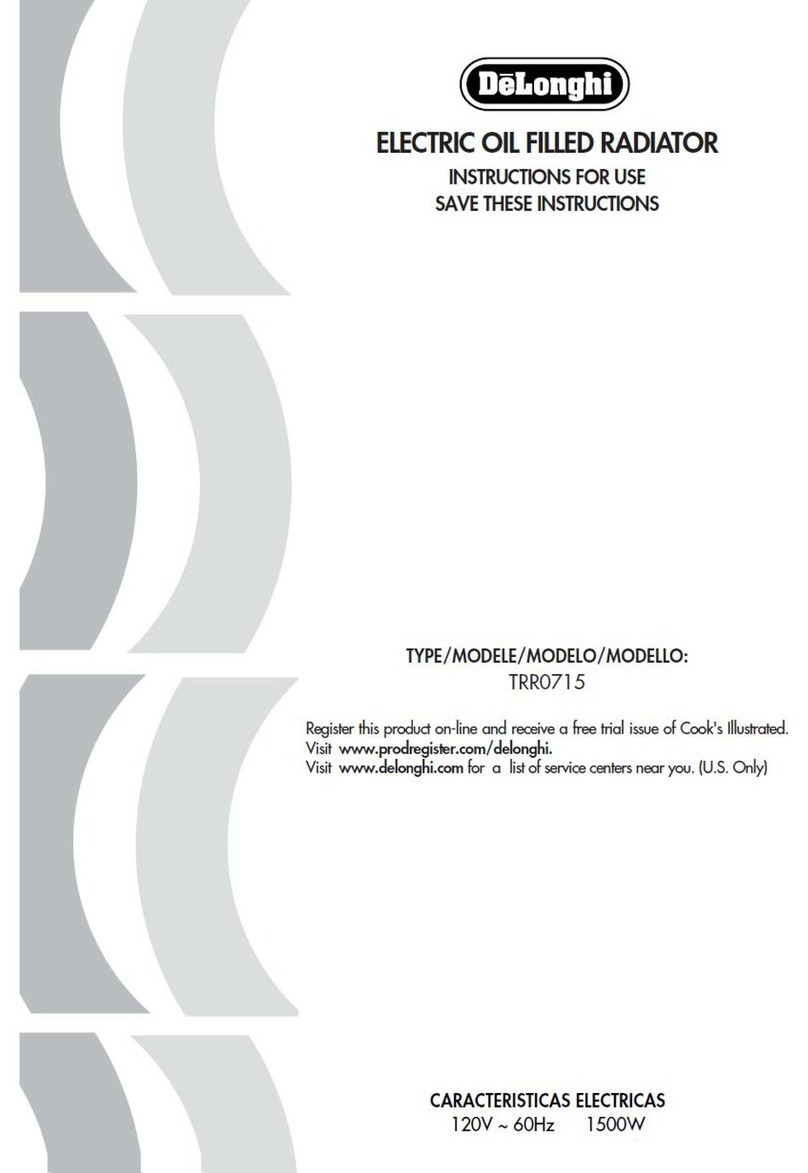
DeLonghi
DeLonghi TRR0715 Instructions for use
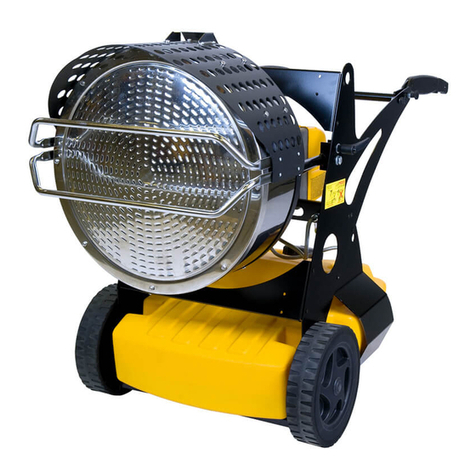
Master
Master XL 9ER operating manual
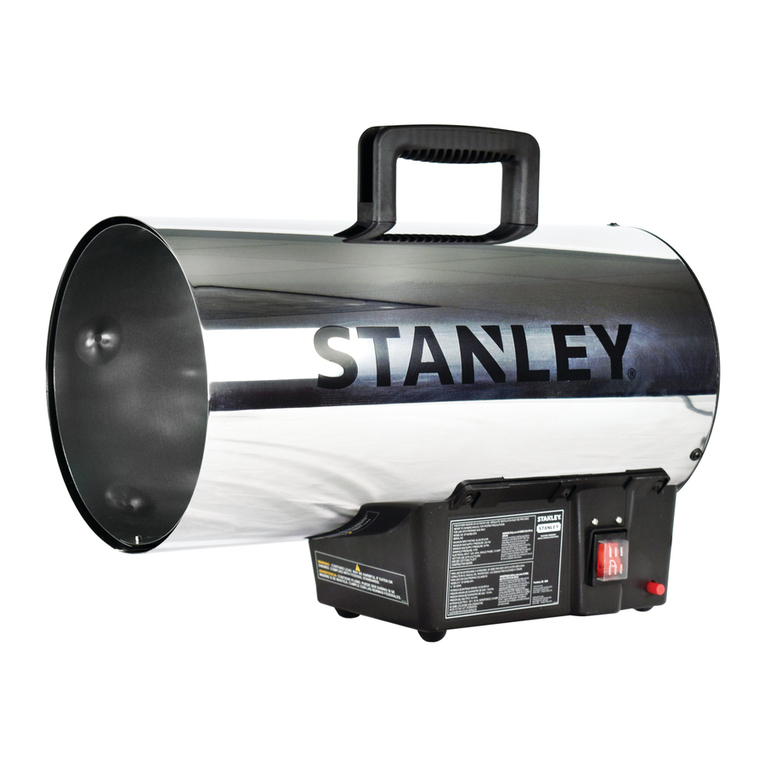
Stanley
Stanley ST-60HB2-GFA User's manual & operating instructions
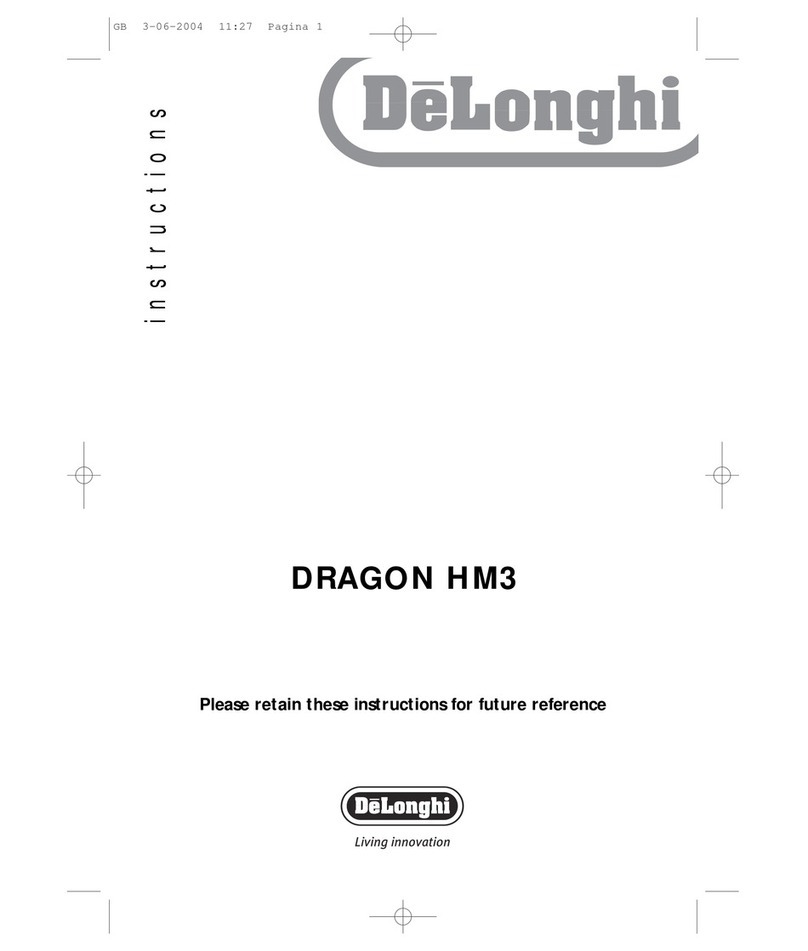
DeLonghi
DeLonghi DRAGON HM3 instructions
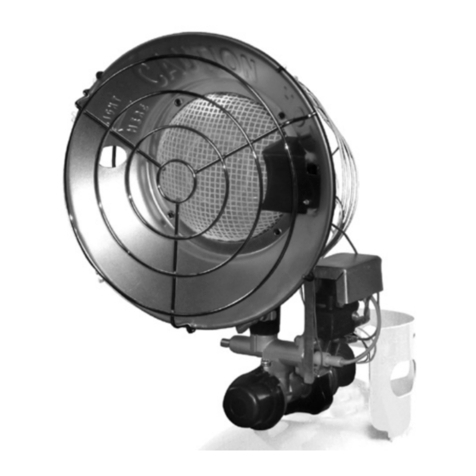
Protemp
Protemp PT-16-TTC User's manual & operating instructions
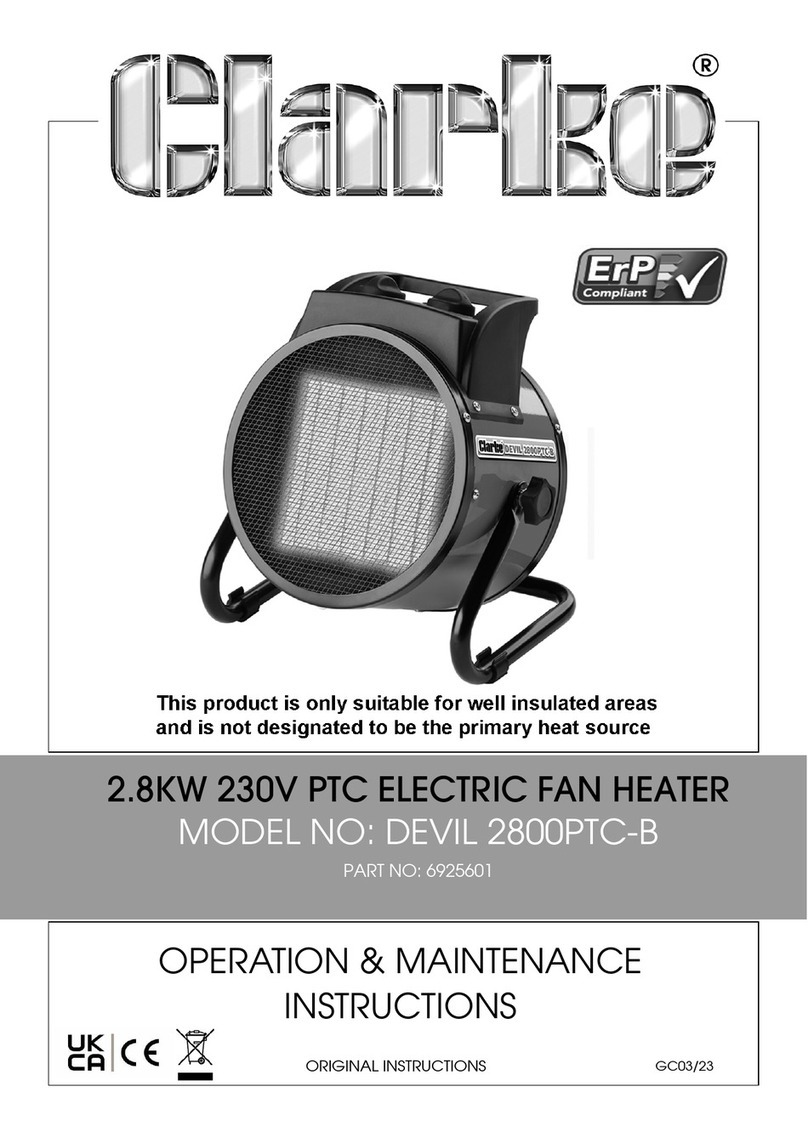
Clarke
Clarke DEVIL 2800PTC-B Operation & maintenance instructions

